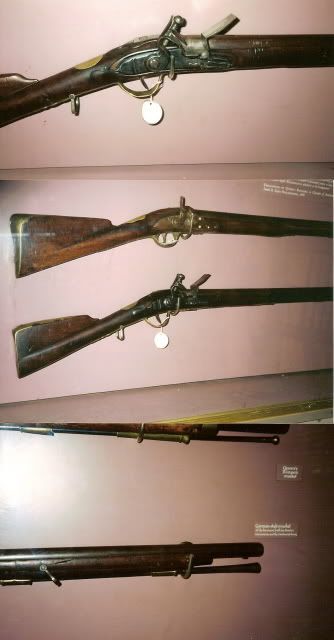Bountyhunter
50 Cal.
- Joined
- Oct 5, 2005
- Messages
- 1,249
- Reaction score
- 2
I am trying not to hijack the other thread--have you guys read the article in the Rifleman that just came yesteday about the (Hessian/Prussian) German Military Muskets?
That period isnt my main interest, but when I look at those pictures, am I seeing a resemblence to the NW gun? General shape, large bow trigger guard, serpent sideplate?
That period isnt my main interest, but when I look at those pictures, am I seeing a resemblence to the NW gun? General shape, large bow trigger guard, serpent sideplate?






